B2B sales operate on a foundation of meticulous research and evaluation, rarely influenced by impulsive decisions. Within this context, companies must strategically design a sales funnel that leads potential customers through a well-thought-out journey, culminating in a successful purchase. The construction of a robust sales funnel emerges as a critical component of this process.
In this blog post, we’ll understand how to create compelling content tailored to each stage of the sales funnel, unveiling strategies to enhance conversions and revenue.
Contents:
1. What is a sales funnel and why is it important?
2. Understanding different stages of a sales funnel
3. Crafting content for each stage of the sales funnel
7. Action stage
8. Measuring and adjusting content effectiveness
What is a sales funnel and why is it important?
A well-defined sales funnel can result in an incredible 16% higher win rate on deals.
A sales funnel, also referred to as a marketing funnel, is the visual depiction of the customer journey, demonstrating the sales process from awareness to the final action.
Essentially, the funnel explains the idea that every sale initiates with a broad pool of prospects and eventually culminates into a much smaller number of people who go through with the purchase.
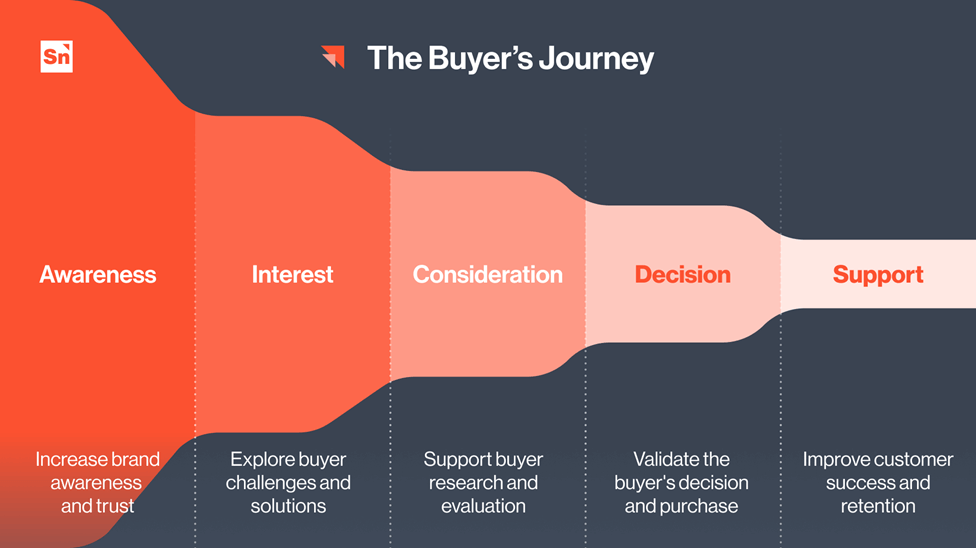
The first step of the sales funnel is to make your prospects aware of your brand and its offerings. Unlike e-commerce businesses, whose focus is on swift marketing promotions which lead to new customers, SaaS needs a more sensitive approach.
Prospects need to be thoroughly convinced that your product/service is the best fit for them. As you gradually guide them through every stage of the funnel, remember your ultimate goal is to build trust through engagement, demonstrate expertise, and convey your values.
On their path to making a purchase, your users will likely come across various stages where they’ll require your responsiveness and support. The way you interact with them at these critical points will significantly influence the conversion rate.
Moving on, here are the most notable benefits of using a sales funnel:
· A well-planned sales funnel helps to move leads through a series of steps, eventually turning them into paying customers.
· It helps to nurture prospects, building lasting relationships that may lead to referrals and repeat business.
· It helps to identify your target audience and tailor your marketing efforts to their needs.
Understanding different stages of a sales funnel
Typically, a sales funnel consists of four stages: Awareness, Interest, Decision, and Action. Let’s take a closer look at each stage.
I. Awareness stage
This is the stage where the potential customers learn about your business and its offerings. At this stage, the customers aren’t even certain about their problems and therefore aren’t looking for any solution. They understand that your business exists but may not show a focused interest.
II. Interest stage
At this stage, the potential customers know about your business, and they’re interested to find out more. However, they aren’t fully convinced to go through with the purchase yet. It’s the ideal stage to engage your prospects by introducing them to more specific details about your product/service.
III. Decision stage
This is the stage when your consumers are confused if they’d go with your offer or your competitors. This is the most crucial stage as you need to build a convincing reason for prospects to purchase your product/service.
IV. Action stage
This is the final stage where the goal is to encourage the prospect to take action and become a paying user. While selling is the essential goal, retaining customers is even more important. So this stage also focuses on retention strategies.
Crafting content for each stage of the sales funnel
Statistics reveal that 95% of potential customers select a vendor that offers sufficient content which helps them easily navigate each stage of the sales process.
Crafting accurate and compelling content for each stage of the sales funnel is crucial to persuade your prospects. Utilizing a document generator can simplify this process, ensuring that the right content reaches the right audience at the right stage. But the real question is how to know what kind of content belongs at which stage.
Well, here’s the four-stage sales marketing funnel with varied examples of content that is ideal for each of these stages.
Awareness stage
Blog posts
An informative, value-packed blog post is ideal for targeting prospects at the awareness stage. 55% of businesses claim that blog posts are among the most productive ways to push your prospects down the sales funnel.
You can formulate a blog by targeting a pain point or a topic that the audience wants to discover. Once a blog is ready, you can share it across multiple platforms, including your marketing website. It’s your brand asset that is crawlable by search engines and discoverable by users.
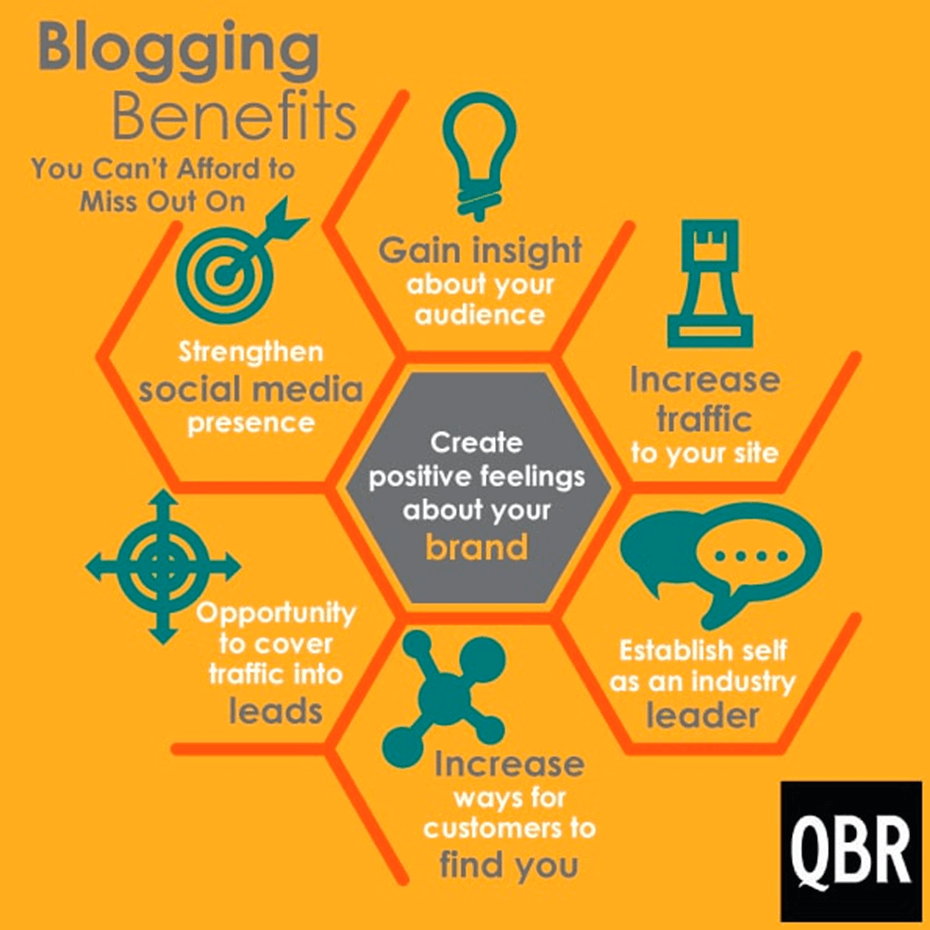
Infographics
An infographic is one of the best content pieces that immediately capture attention and generate backlinks. They aren’t just eye-catching but also have the benefit of conveying immense knowledge in a relatively short period. Additionally, they are:
· Highly shareable
· SEO-friendly
· Easier to understand
· Widely searched
· Suitable for social media use
· Ideal for promoting your brand image
Statistics show that people process images 60,000 faster than text. They even retain the data for 3 additional days if it’s combined with a relevant image. Therefore, using appropriate infographics is a brilliant way to make people aware of your industry or business and boost your marketing efforts.
Below is a great example of an engaging infographic that offers profound information in a quick, easy-to-consume way.
Social media content
Unlike the gradual process of ranking on Google for organic traffic, social media delivers almost instant results. These platforms play a pivotal role in lead scoring through consistently sharing high-quality content and fostering community engagement. No wonder 97% of marketers utilize social media to connect effectively with their audience.
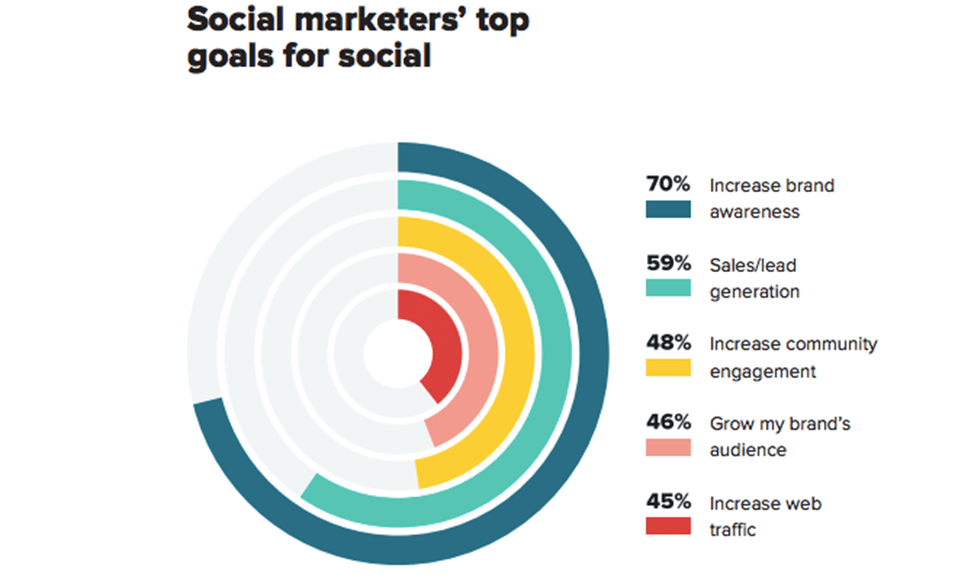
Here are some effective ways to boost awareness through social media platforms:
· Run social media paid ads for lead generation
· Add pop-ups to your website for maintain continuous lead generation process.
· Use social media for content distribution
· Leverage social media video marketing
· Run referral campaigns to increase social leads
· Host virtual events or social media campaigns
You can also use a reliable social media benchmark tool to gauge your content’s performance and tweak things if needed.
Checklists
At the awareness stage of the sales funnel, most customers only have a problem they’re looking to solve. In other words, instead of searching for a product like a ‘sales automation solution’, they might be exploring queries like ‘how to enhance customer relationships’ or ‘strategies for overall business growth.’
To capture their attention, you must divert your focus from an immediate sale and offer assistance in addressing their particular issues or pain points. And this is where a well-crafted checklist comes in handy.
Helpful checklists offer a step-by-step process to guide potential customers through their journey. By helping them in their journey, you boost the likelihood of them returning to you when they’re ready to make a purchase.
Videos
For prospects who know absolutely nothing about your brand or products, videos are an excellent way of communicating a lot of information engagingly. Over 95% of marketers claim that videos help boost brand awareness.
Videos often form a part of a scalable and shareable marketing strategy. You can use videos to boost brand awareness across multiple touchpoints, such as social media channels. Apart from awareness, they also help to engage prospects, build trust with your audience, and boost your SEO.
Some of the best types of videos that you can include in your marketing strategy include:
· Explainer videos
· Live streaming videos
· Corporate and brand story videos
· Customer testimonials
· Video ads
· User-generated videos
Interest stage
eBooks/Whitepapers
Once prospects are aware of your business, it’s time to nurture their interest with detailed information about your offerings. This stage is crucial for B2B sales prospecting, as it involves deepening the relationship with potential clients.
Sometimes a standard blog post might fall short. Your prospects may seek more comprehensive insights into subjects that showcase your expertise. This is precisely where eBooks and white papers come into play.
These are essentially long-form content pieces that establish your brand as a thought leader in the industry. When most prospects become willing to exchange their email address for a copy, these can be a vital part of your marketing funnel. Below is a good example demonstrated by Oracle:
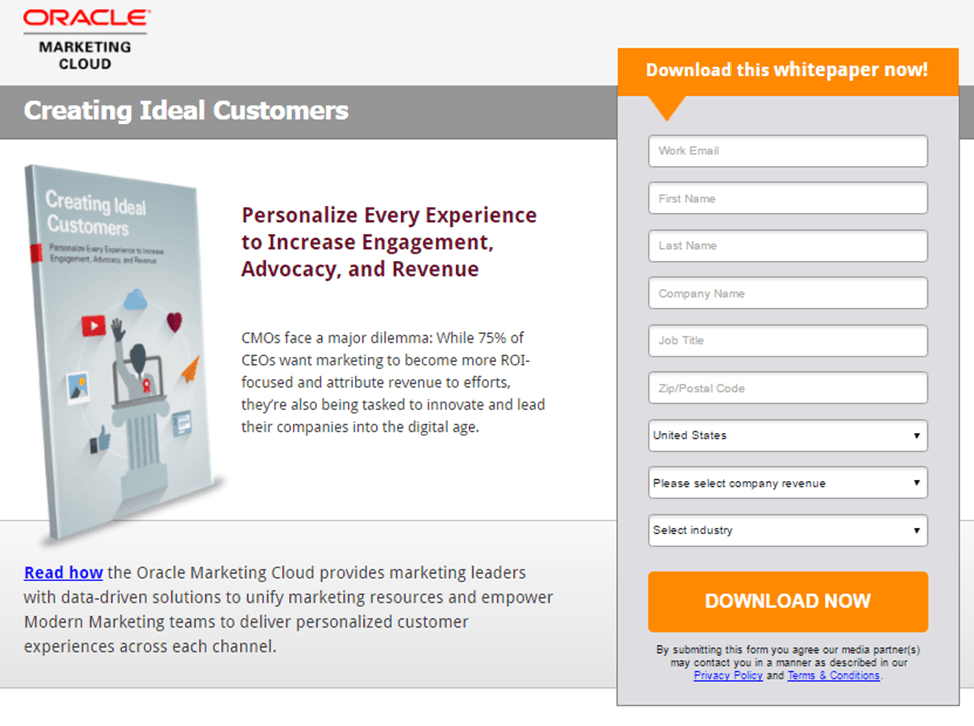
How-to guides
Building trust with your prospects is a crucial step before they consider making a purchase. Establishing your brand as a thought leader is the most effective way to achieve this, often accomplished by providing reliable and free advice.
Detailed content pieces such as how-to guides play a key role in this process, offering step-by-step information on solving problems with your brand’s offerings. This not only instills faith in your brand but also significantly enhances conversion rates.
Decision stage
Product comparison guides
At this stage, prospects are fully aware of their problem and actively seeking a solution. It’s the opportune time to engage in a direct comparison with your competitors, spotlighting your unique advantages. Product comparison guides serve as the perfect tool for aiding their decision-making process.
These guides meticulously highlight the differences between similar products, empowering customers to pinpoint the best fit for their needs. This not only expedites the sales process but also guides them towards a faster checkout.
Below is a concise product comparison infographic that presents crucial information for a clear decision-making process.
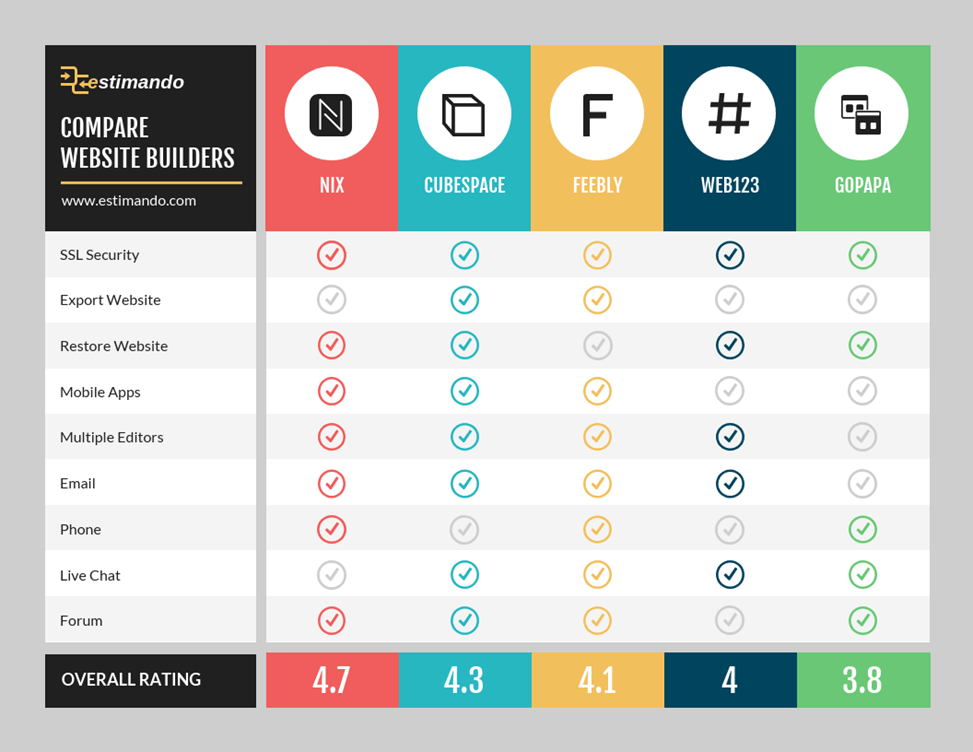
Case studies
Case studies prove that your business fulfills all customer expectations. They demonstrate the value of your products and services and build authority.
Case studies are especially beneficial for B2B brands as they provide quantifiable results as an outcome. They’re also often used to furnish social proof.
Here are the top ways you can use case studies in your marketing strategy:
· Have a dedicated case studies page on your website
· Write blog posts about your case studies
· Create videos from case studies
· Post case studies on social media
· Use case studies on landing pages
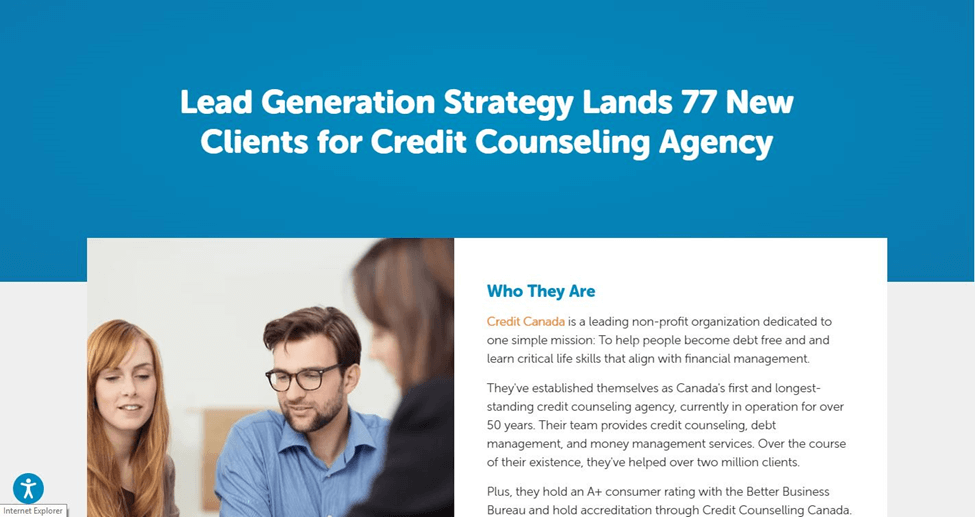
Customer testimonials
97% of B2B customers claim that testimonials and peer recommendations are the most dependable type of content.
Customer testimonials are crucial for establishing trust and social proof. Genuine testimonials from your valued customers validate your credibility and authority. You can feature testimonials on your landing pages, product pages, or other pages that are designed to convert.
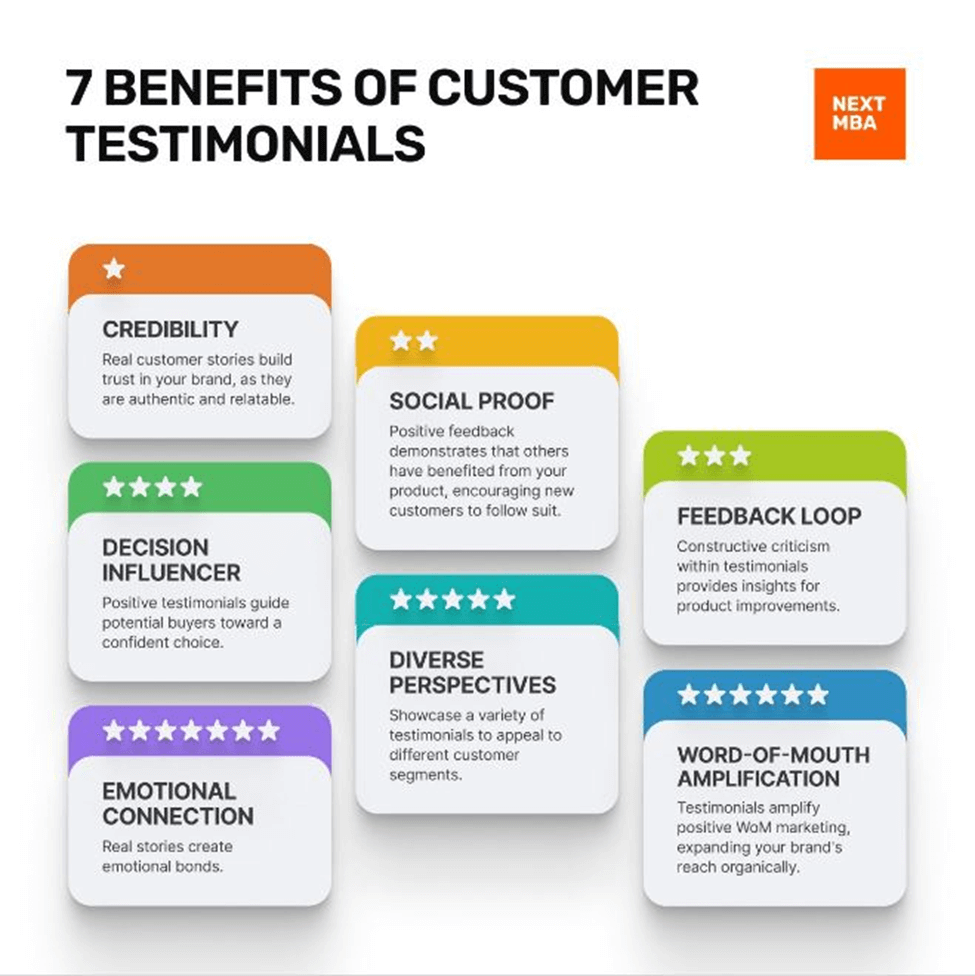
Action stage
Free trials and demos
At this stage, your leads are poised to make a purchase, making it imperative not to let your efforts go to waste. Providing free product demos becomes a strategic move, offering a hands-on experience that demonstrates the unique value of your offerings.
Personalizing the demo to align with the prospect’s specific needs is crucial, showcasing precisely how your product addresses their pain points. A stellar example is Dropbox, which utilizes free trials for prospective leads. While the brand offers a free option with limitations, the strategic use of free trials plays a pivotal role in encouraging clients to eventually sign up for a larger tier plan.
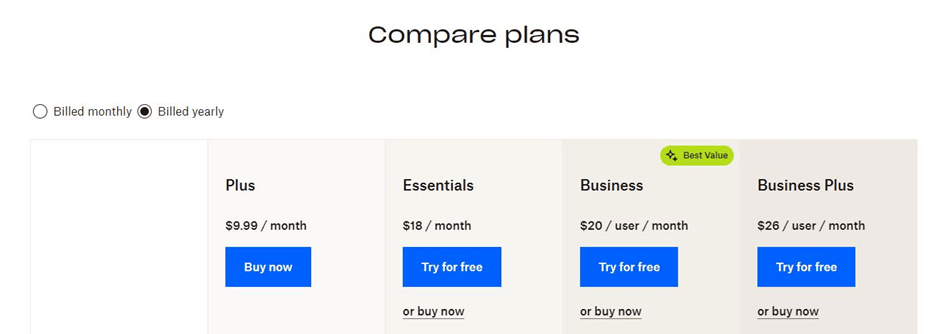
Consultation offers
A consultation offer is another effective way of offering a little bit of free service in exchange for an opportunity to close the sale. Providing free consultation sessions helps to reduce customer anxiety before the final purchase. Besides, it also reinforces faith in your business offerings.
Pitch your consultation offer in a way that prospects become sure of walking away with something (a piece of actionable advice or strategy) in exchange for their time.
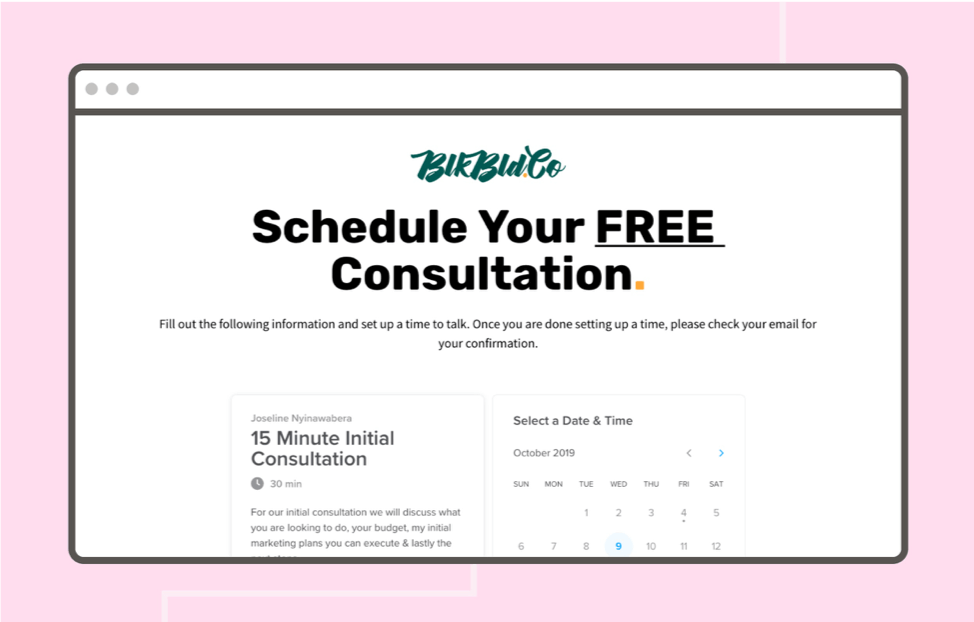
Measuring and adjusting content effectiveness
The sales funnel doesn’t end once a customer signs up for the first month. That’s when the real hard work begins.
While acquiring a customer is a significant milestone, cultivating a lasting relationship requires ongoing effort. Providing consistently high-quality and valuable content post-purchase transforms a one-time customer into a passionate brand advocate.
To achieve this, it’s essential to continuously measure the effectiveness of your content and stay abreast of relevant metrics. Regular assessments help guarantee that your content remains aligned with evolving customer needs and preferences, fostering long-term engagement and loyalty.
Conclusion
Content is the foundation of every sales funnel. Without offering the right content at the right time, you may fail to give your prospects the information they need to move to the next stage of the sales process.
Purchases in the B2B domain only happen after several vital steps in the funnel. Consider the needs, interests, and preferences of your audience to nurture them at every stage. Even after a purchase has been made, make sure they know that you’re still listening to their needs. This will ensure a loyal customer base in the long run.


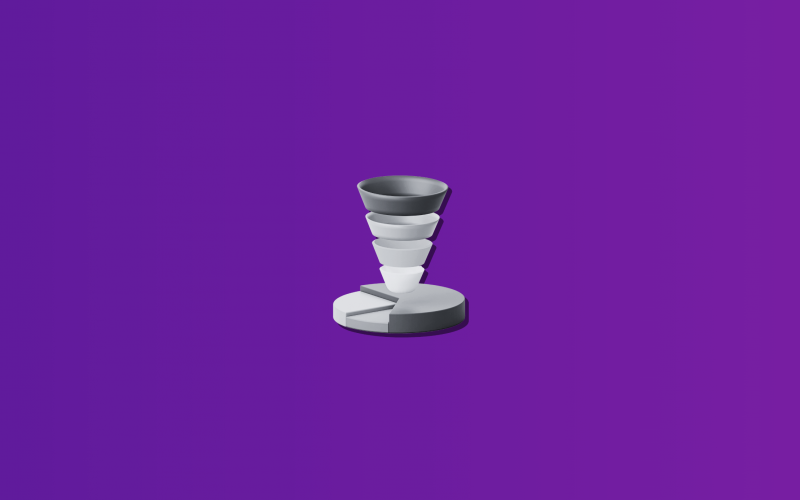

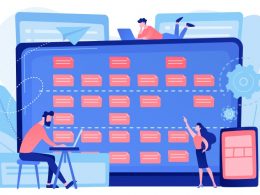

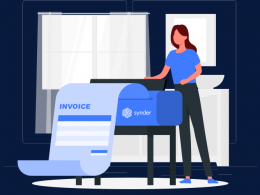




.png)